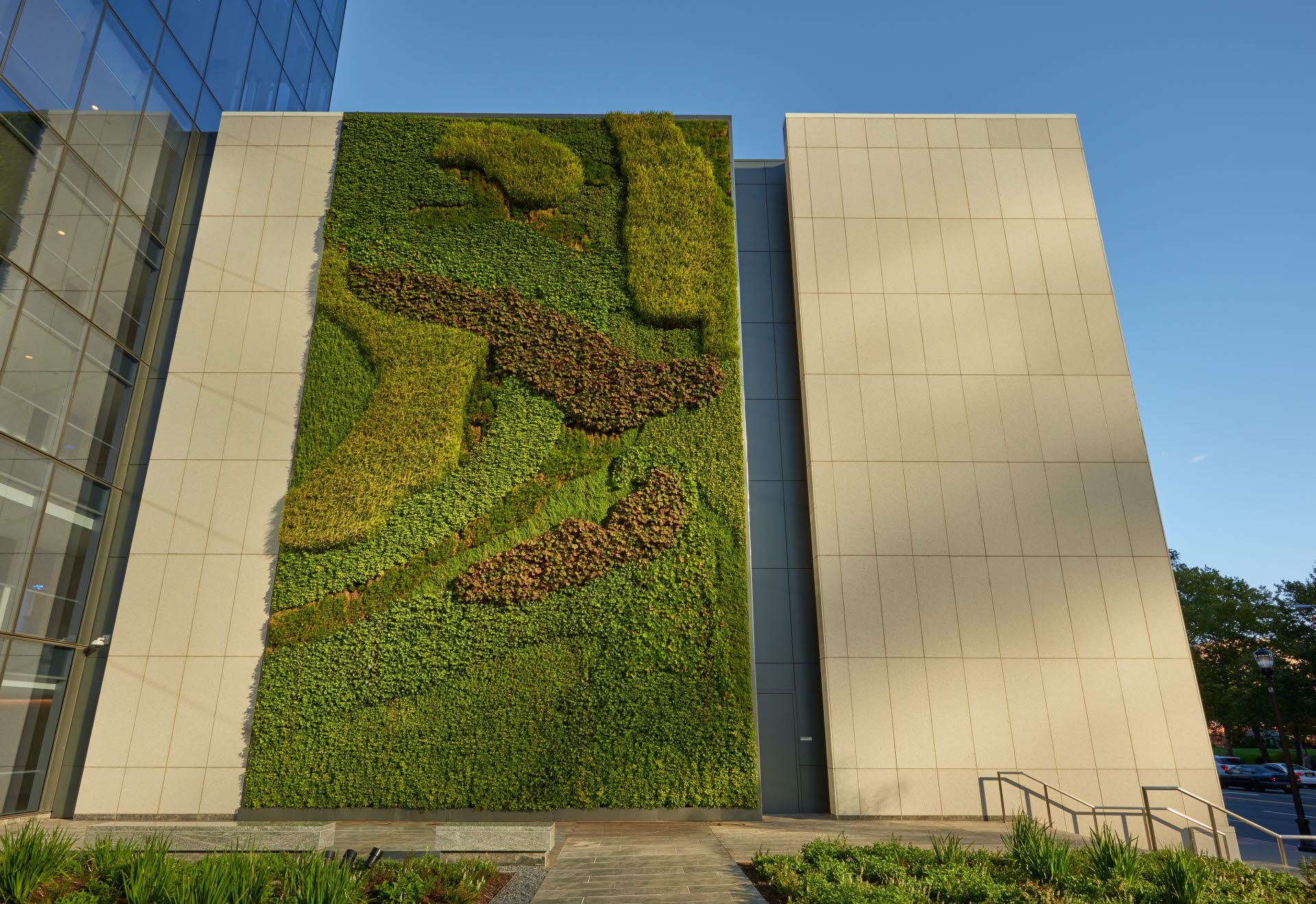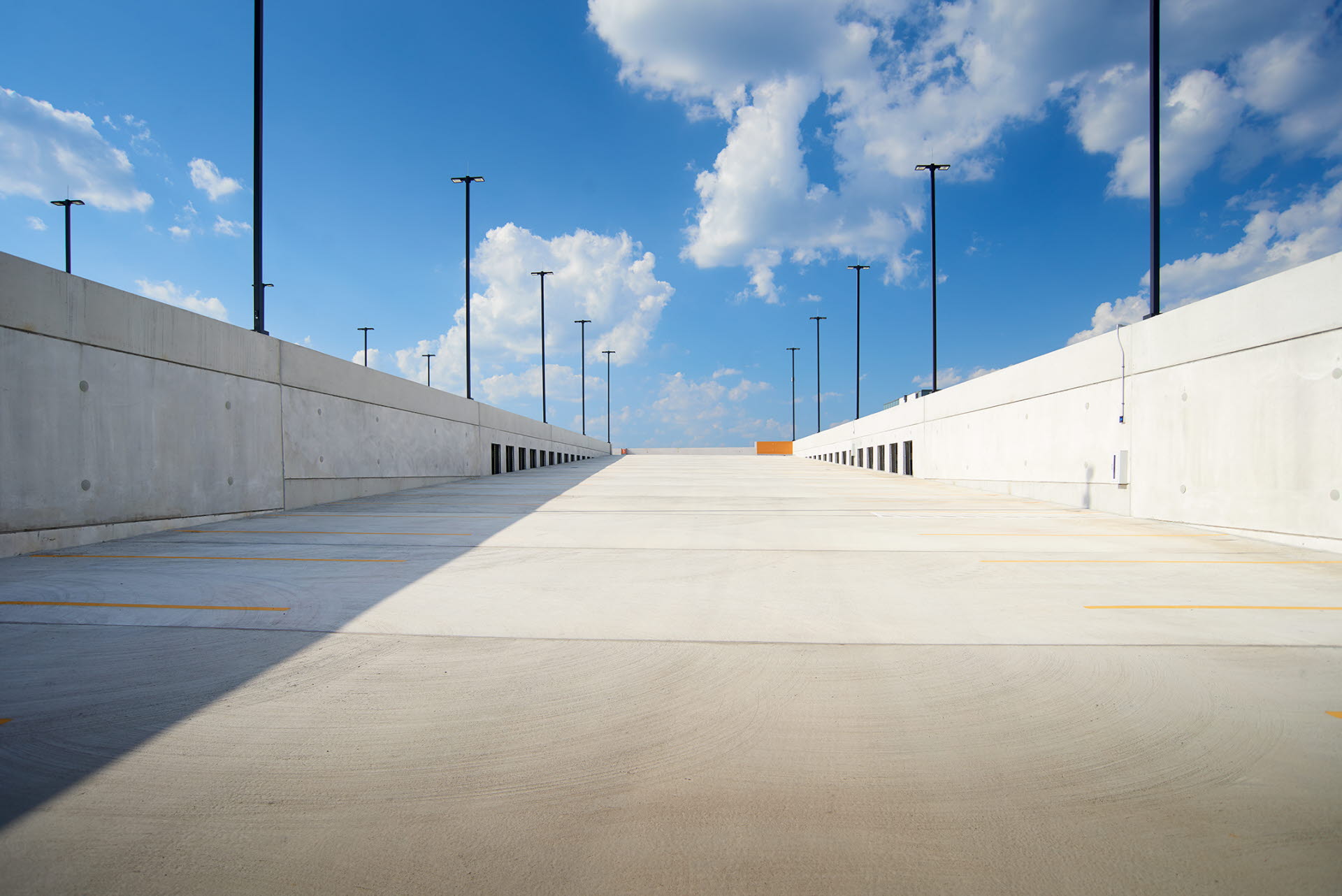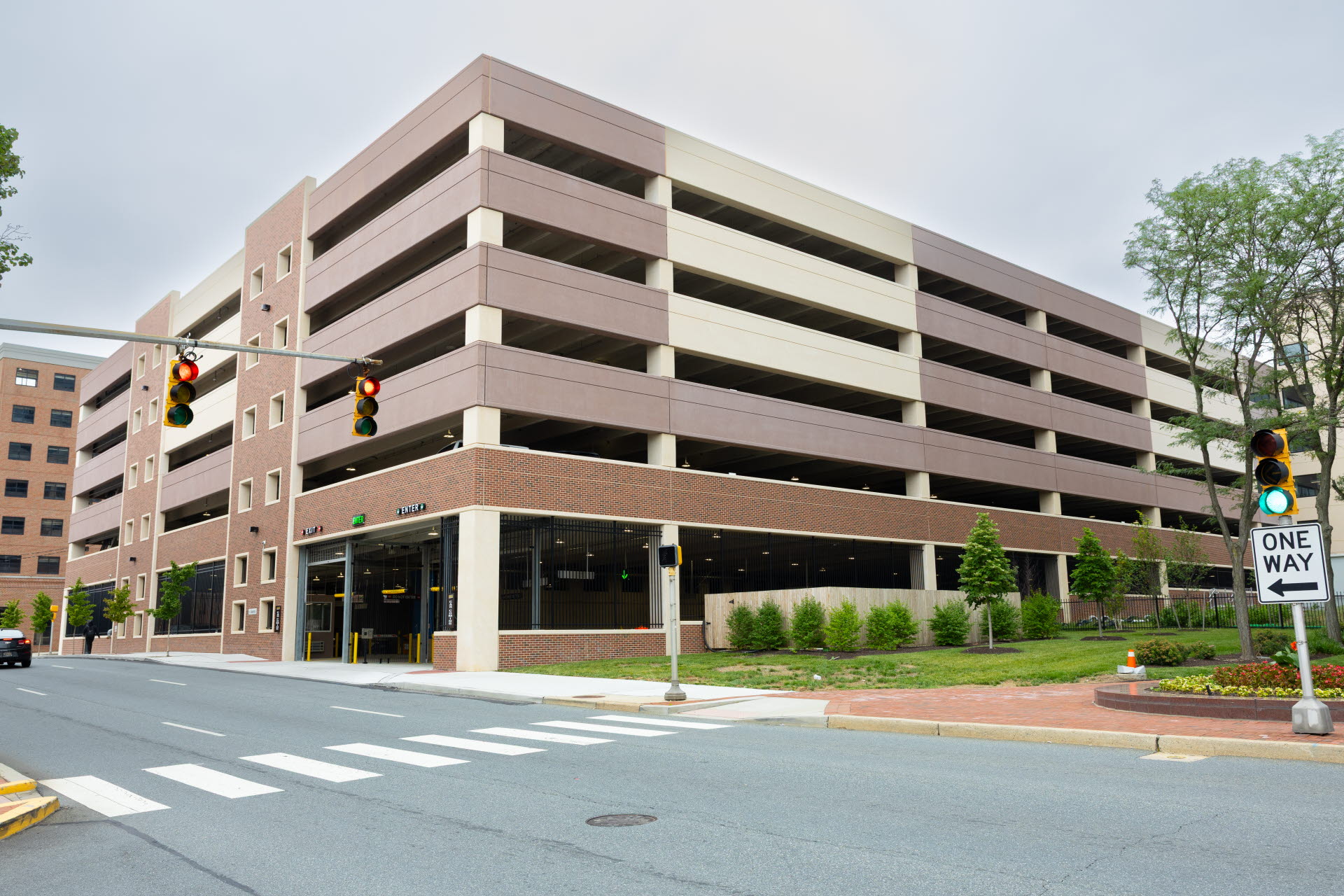Asked & Answered: 7 Frequently Asked Questions About Precast Concrete

Precast concrete has become an increasingly popular and versatile building material — yet its unique characteristics and wide range of applications often lead to questions from those involved in or considering construction projects.
Whether you're an architect, engineer, contractor, or simply curious, this guide addresses seven frequently asked questions about precast concrete and provides insights into its numerous advantages as an efficient and high-quality construction material.
Precast Concrete Basics
Before we dive into frequently asked questions about precast concrete, it’s important to go over a few of the basics. Simply put, precast concrete components are manufactured off-site before being used to build a structure.
Unlike traditional concrete construction, precast is formed in a reusable mold or form and cured in a controlled environment before it’s transported to the construction site. Doing this allows for greater quality control, faster construction, and often more cost-effective solutions compared to on-site casting.
Precast Concrete Benefits
As we mentioned above, many precast concrete advantages make it a popular building choice for various markets and industries. When you partner with High Concrete, we ensure you’re reaping these precast concrete benefits:
- Enhanced Durability: The inclusion of rebar and stressed cable strands within the precast concrete significantly strengthens the components, ensuring long-term durability.
- Construction Efficiency: Off-site fabrication of building elements accelerates on-site erection once the site is prepared.
- Integrated Features: Precast concrete can incorporate ready-made aesthetic finishes, insulation, and even interior walls, streamlining the construction process.
- Sustainability: Precast concrete is produced in controlled environments, which reduces material waste, energy consumption, and construction site disturbances, leading to a lower environmental footprint compared to traditional cast-in-place methods.
Precast Concrete Certifications
Achieving the highest 'AA' rating in the PCI architectural precast program for both our Denver, PA, and Springboro, OH, plants, High Concrete Group stands as a premier North American producer. This distinction reflects our exceptional quality, technical capacity, and artistic skill, demonstrated through our ability to execute the most complex architectural precast designs and finishes.
As a team, we’re proud to offer superior products for projects of all categories. High Concrete Group's 'AA' certification — earned on our first attempt in October 2020 — highlights our enduring commitment to quality and innovation.
Recognizing that the PCI standards may require guidance, our precast specialists, who collaborated with PCI on the program's development, are ready to assist architects, designers, and engineers. To this day, we’re actively bidding on and winning projects specified under the PCI 'AA' certification.

7 Frequently Asked Questions About Precast Concrete
Now that we’ve covered the basics, it’s time to demystify this innovative material. Below, we've compiled answers to seven frequently asked questions about precast concrete. This way, you can have a foundational understanding of its capabilities, benefits, and common considerations before you decide it's the best option for your next project.
1. What Are Common Precast Concrete Uses?
As we mentioned above, precast concrete's inherent versatility, durability, and efficiency have made it a cornerstone material across a vast spectrum of markets and industries. At High Concrete, we specialize in the following buildings and structures:

2. What Are Common Precast Concrete Applications?
High Concrete offers a comprehensive range of precast concrete applications and products suitable for virtually any project — large or small. Some of the precast concrete products we offer include:
- Architectural enclosure systems
- Structural precast parking garages
- Total precast systems
- Thincast rain system
3. What Are Precast Concrete Aesthetics?
Another frequently asked question about precast concrete is how it can be made visually appealing. At High Concrete, we understand you want your structure to stand out; that’s why we offer a wide range of precast concrete aesthetic possibilities — moving far beyond the perception of plain, gray slabs.
Precast concrete’s versatility allows our architects and designers to achieve diverse visual effects through various techniques applied during and after the manufacturing process.
Pigments, Colors, and Aggregates
The diverse color palette of precast concrete finishes is structured around eight broad families. These colors are created by carefully combining white or gray cement, various coloring agents or pigments, and the visual contribution of fine or coarse aggregates.
Textures
Textural variations and the degree to which aggregates are exposed in precast concrete create visually rich surfaces with a noticeable sense of depth, achieved by controlling the amount of stone incorporated into the mix. When working with us, you can choose between the following textures depending on your precast concrete design needs:
- Form finished
- Acid etched
- Retarded - exposed aggregate
- Blasted
- Honed or polished

4. What Is Precast Concrete’s Environmental Impact?
Another frequently asked question about precast concrete we’ve noticed is whether it’s a sustainable building method. Unlike many traditional construction methods, precast concrete offers several advantages that contribute to its sustainability:
- Low water-cement ratios in precast concrete yield exceptionally strong and long-lasting structures.
- Concrete's thermal mass helps shift heating and cooling loads, leading to reduced energy consumption.
- Factory production minimizes waste both at the plant and on-site.
- Precast allows for optimized structural elements, reducing material redundancy.
- Innovative Supplemental Cementitious Materials (SCM) to reduce overall global warming potential (GWP).
- Concrete can effectively utilize recycled content.
High Concrete Group operates under a "Triple Bottom Line" philosophy that integrates people, planet, and prosperity. This holistic approach shapes our production of sustainable building systems, our cultivation of meaningful and long-term relationships with business partners, and our consistent efforts to safeguard the environment in our daily work and the communities we serve.
5. What Is Precast Concrete’s Lifespan?
The lifespan of precast concrete structures is generally estimated to be 50 to 100 years or even longer when properly designed, manufactured, installed, and maintained. History suggests that with optimal conditions and maintenance, modern precast concrete structures can even reach lifespans exceeding 100 years. Factors affecting precast concrete lifespan include:
- Quality of materials and manufacturing
- Installation process
- Environmental conditions
- Maintenance
- Load and usage
- Concrete mix design
- Curing process
6. What Is Pre-stressed Precast Concrete?
Some of the most frequently asked questions about precast concrete involve how it’s made and what makes it better than traditional concrete construction. While concrete is known for its compressive strength, it can lack in tension.
Prestressed concrete improves the performance of structural elements (beams, slabs, columns) by pre-compressing them to offset tensile stresses that develop under load. This pre-compression leads to increased load capacity, longer possible spans, and potentially reduced member size and weight. Here’s a breakdown of how we pre-stress our precast concrete:
- First, the strand is securely anchored and then stretched to a predetermined tension, which can vary significantly based on the design requirements, ranging from thousands to tens of thousands of psi.
- Once the desired tension is achieved, concrete is poured into the mold surrounding the stressed strand, allowing it to bond as the concrete cures.
- Upon reaching approximately 75 percent of its specified strength, the strand is released, transferring axial compressive force into the concrete member's cross-section.
- Finally, the hardened element can be removed from the form and moved for storage.
7. Is Precast Concrete Cost Effective?
The final frequently asked question about precast concrete we’ll cover is related to its cost. While the initial cost of precast elements and transportation might seem more expensive, many factors contribute to long-term savings — making it a highly cost-effective solution for a wide range of construction projects. Here are some of the factors that make precast concrete cost effective:
- Faster construction timelines (off-site manufacturing, quicker installation, and reduced delays).
- Reduced labor costs (less on-site labor, minimized waste, and efficient production).
- Enhanced material efficiency and quality (optimized materials, consistent quality, durability, and longevity).
- Predictable budgeting (fixed costs and economies of scale).
- Lower long-term costs (reduced maintenance, energy efficiency, and extended lifespan).

By offering compelling advantages in terms of durability, efficiency, and aesthetic versatility, precast concrete remains one of the most robust and adaptable solutions for several construction needs.
By understanding the answers to these frequently asked questions about precast concrete, you can appreciate the significant role it plays in modern construction and its potential to contribute to innovative and sustainable building practices.
Ready to see what precast concrete can do for you? Contact us today.

